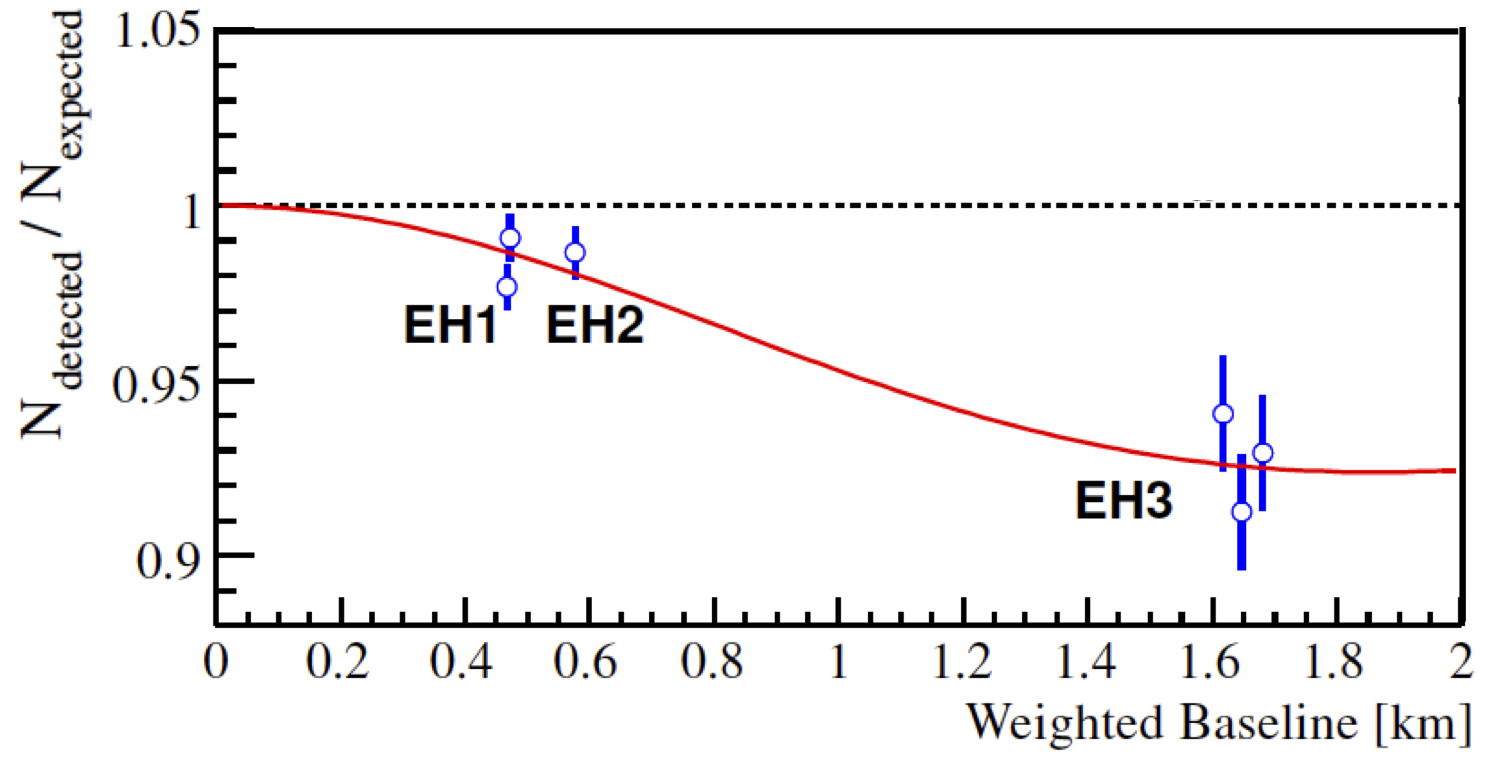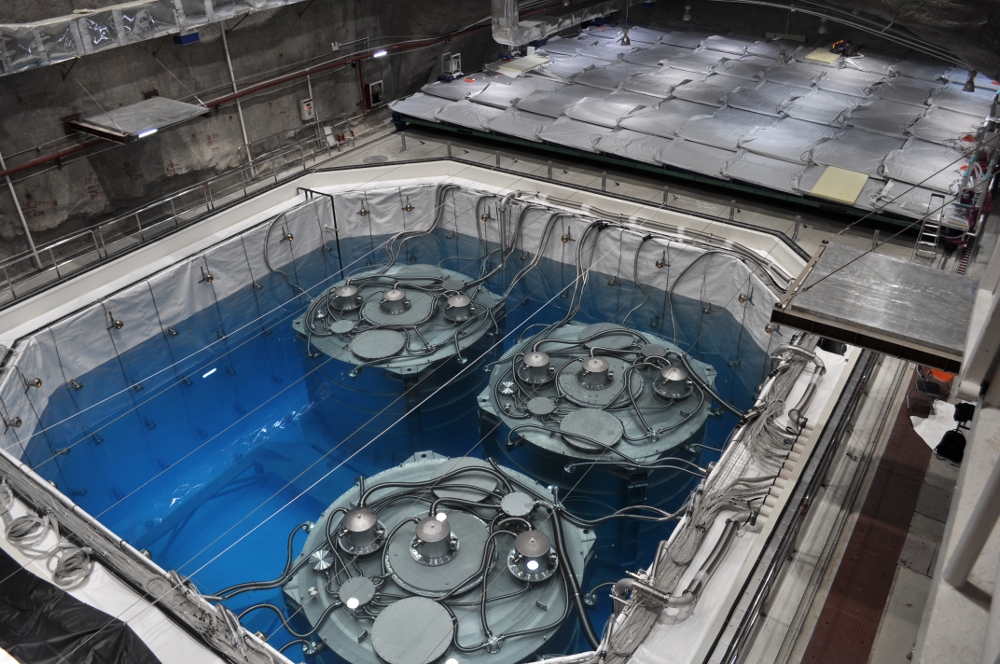Features Archive
Daya Bay Measures the Neutrino Mixing Parameter sin22θ13
In reactor neutrino experiments such as Daya Bay, the oscillation is observed as an electron antineutrino disappearance at a distance of about 2 km from the reactor. The effect can only be measured with confidence in the comparison of detectors placed near the reactor cores – which measure the neutrino flux before significant oscillation has occured – to detectors placed farther away – at a location close to the oscillation maximum. In this way uncertainties associated with antineutrino production in the reactor, the interaction cross section in the detector, and to a lessor degree detector efficiency will cancel in the near/far detector comparison. Daya Bay Collaboration is the first to apply this technique and report results, finding sin22θ13 = 0.092±0.016(stat.)±0.005(syst.).
Read the full press release


Archived Feature Articles
- Shunsaku Horiuchi Solves Dark Matter Mystery (08/27/20)
- Rebekah Pestes Wins the 2020 Scharff-Goldhaber Prize (07/02/20)
- Neutrino Anomalies in Antarctica Explained by Prof. Ian Shoemaker (09/09/20)
- Professor Huber Details How Antineutrino Detectors Could Aid Nuclear Nonproliferation (03/12/20)
- CNP Researchers Publish Neutrino Observation with the Mobile Neutrino Detector (03/11/20)
- CUORE Sets New Limits on Neutrinoless Double Beta Decay (03/11/20)
- CNP scientists Win Cosmology Prize for Research About Dark Matter and Dark Energy (04/29/19)